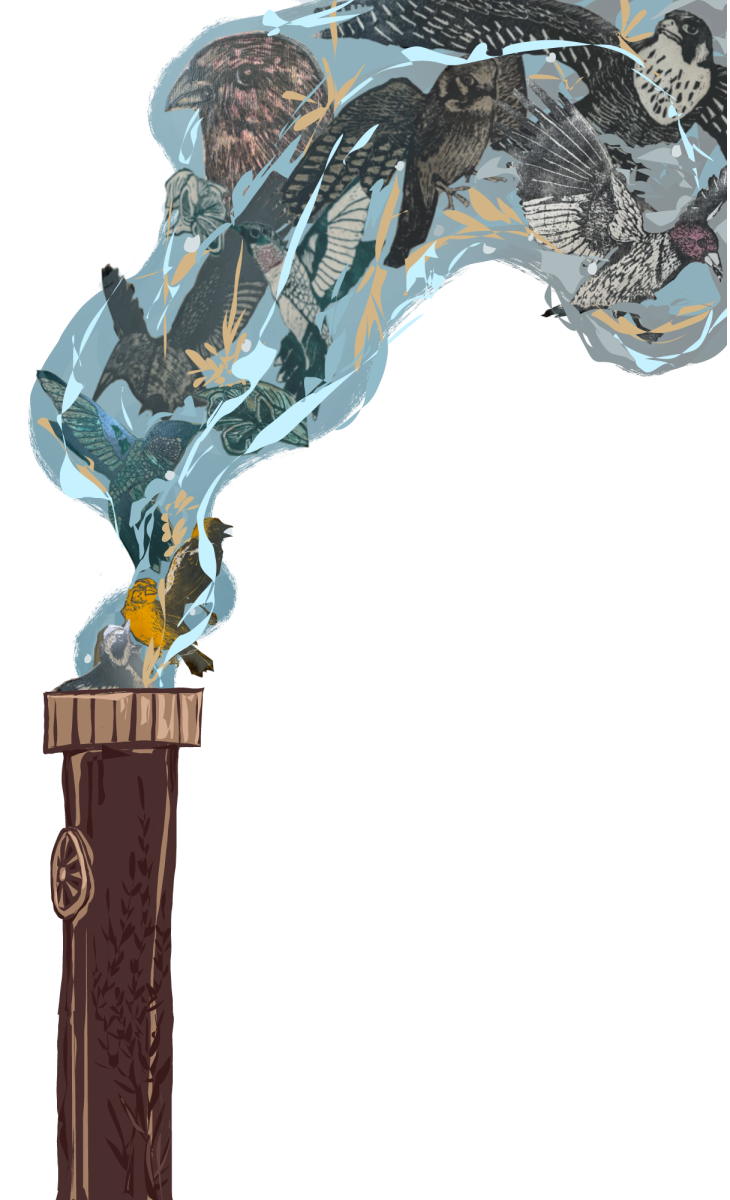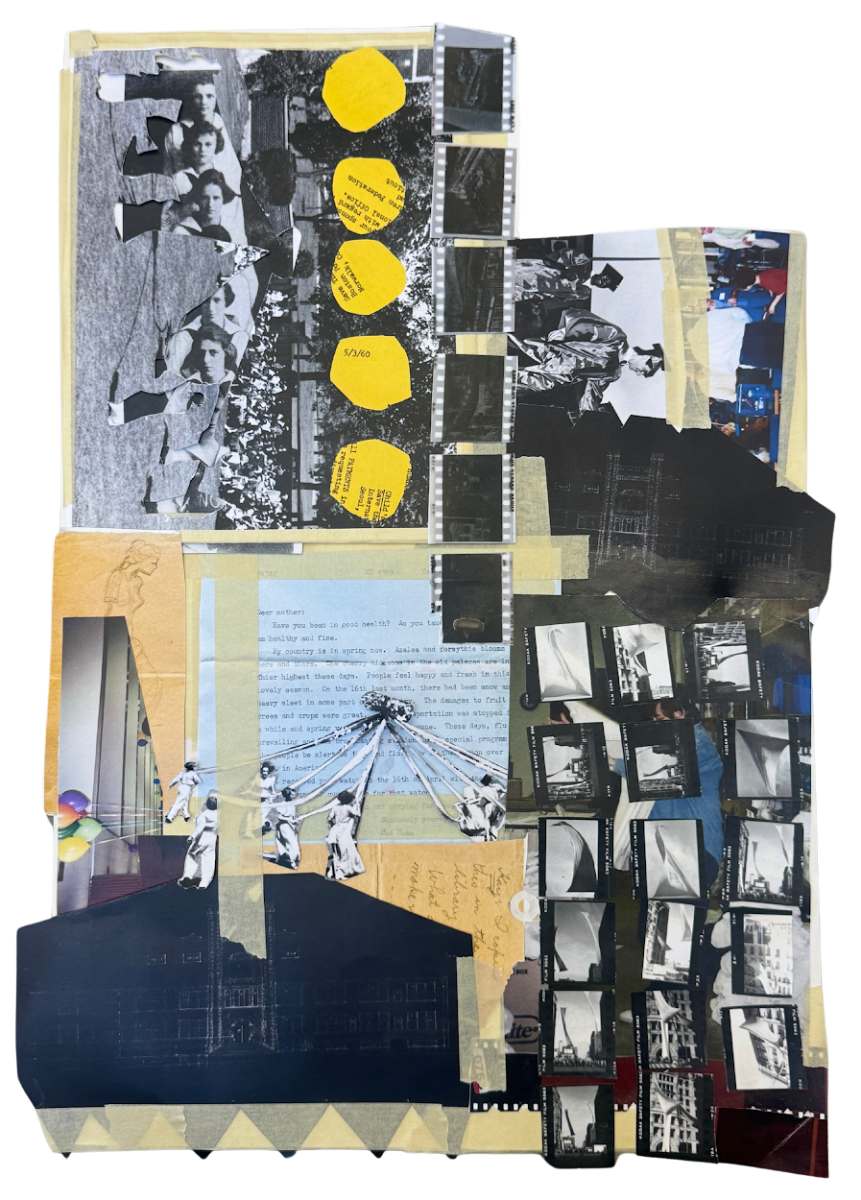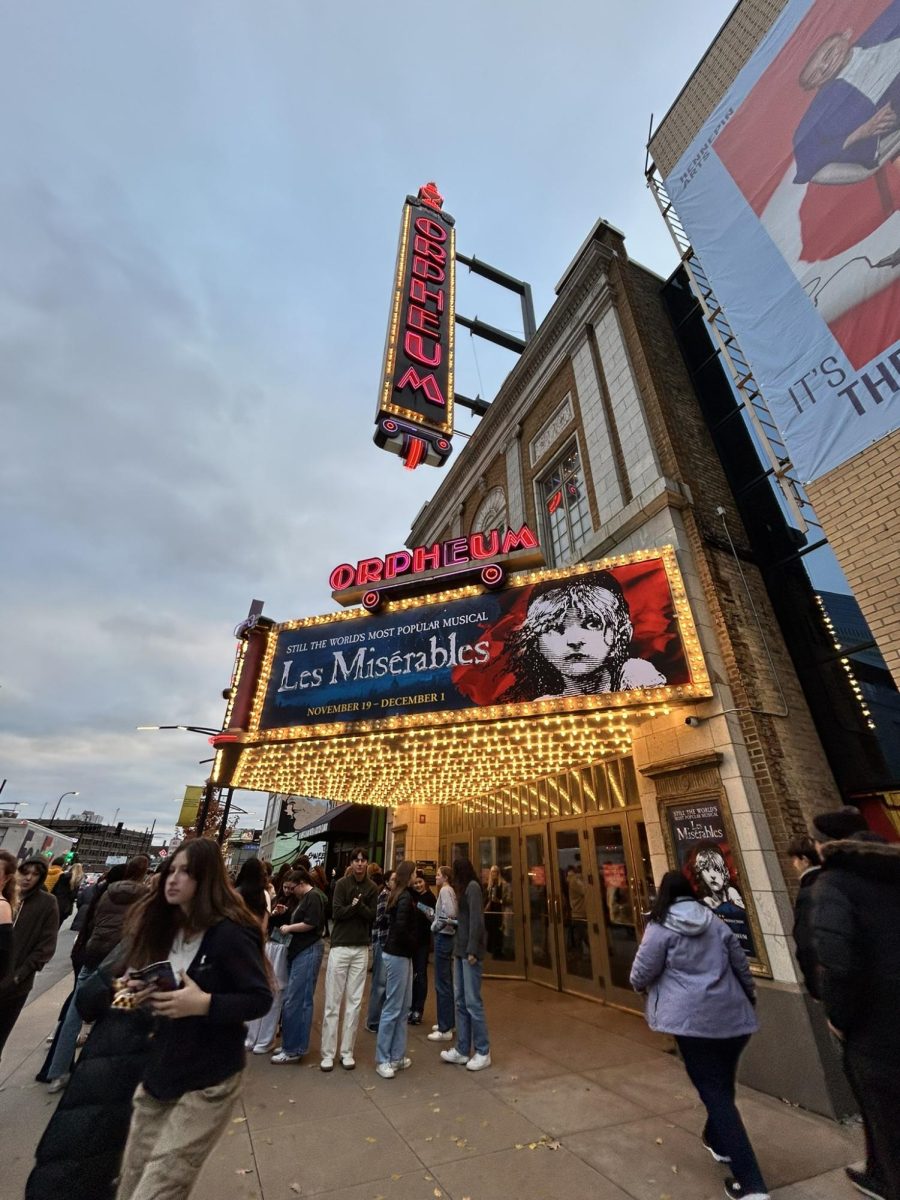If you go to the Walker, careful—don’t sit on the chairs, throw anything away, or use the elevator. The Walker Art Museum currently hosts an exhibit called Lifelike, a collection of sculptures, drawings, photographs, films, and paintings crafted in extreme realism with an emphasis on the overlooked, the simple, the everyday—including a tiny elevator door (pictured above, Maurizio Cattelan: Unititled, 2001), a marble trash bag (Jud Nelson: Hefty 2-Ply, 1979-1981), and a larger-than-life set of brown folding tables and chairs (Robert Therrien: No Name, 2008).
Through glorifying the basic, the artists featured in Lifelike hope to send deeper messages through pieces that seem straightforward and simple.
James Casebere, sculptor and photographer of a scene built with perfectly hand-crafted cardboard houses, trees, hills, and roads lit artificially to mimic dusk (pictured at right, Landscape with Houses (Dutchess County, NY) #8, 2010), stated that his recreation of a small farmhouse surrounded by bigger, more modern homes was meant to convey changing society and the new economy.
Says Casebere, this piece was “inspired by the mortgage crisis.” Casebere’s guiding principle fits the theme of Lifelike itself: “There are no originals, but my work doesn’t preclude originality,” he says. “I take something I don’t like, then change it so it is the same thing, my way.”
Casebere’s series of prison sculptures and photography was inspired by Iranian jails and Taliban cells, and is meant to protest treatment of inmates.
Many Lifelike artists, Casebere included, have devoted much of their lives outside of this show to the same type of art that it exhibits—giving new meaning to seemingly uninteresting aspects of life. James Casebere has been making and photographing realistic and surrealistic sculptures since his education at the Minneapolis College of Art and Design, where he graduated from in 1976.
Lifelike consists of pieces made between the 1960s and the present, displaying over 55 artists. The art ranges from the perfectly sculpted to a self-portrait that can easily be mistaken for a black-and-white photograph (Chuck Close: Big Self Portrait, 1967-1968).
In all cases, the art is meant to look exactly like the real world—a celebration of the small things in life that people easily take for granted.
Blake has had a long-standing connection with the Walker, as admission is not only free for Blake students (and all teens), but the museum is also a five-minute walk from the Upper School building.
The museum has many interesting exhibits such as Poison and Candy (Frank Gaard) and Absentee Landlord (John Waters), with pieces that span all styles, mediums, and time periods, both in permanent collections and in temporary exhibits.
Lifelike is an excellent exhibit for Blake students to attend: it’s thought-provoking, unusual, and easy to access. The exhibit will run through May 27.
Interview with Mr. Casebere was conducted on February 23, 2012 and arranged and facilitated by faculty member Robert Teslow and MCAD faculty member Joan Olson.






